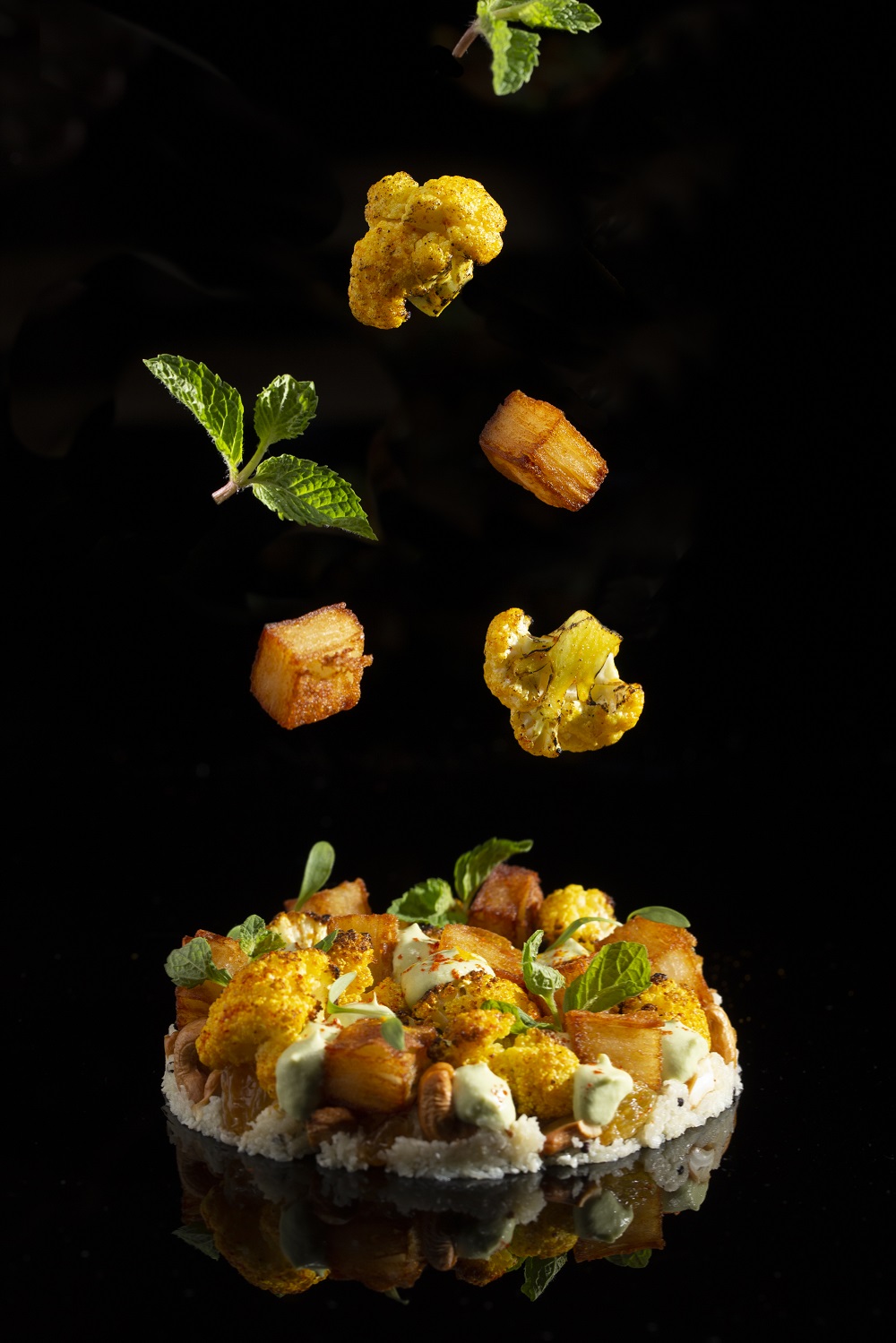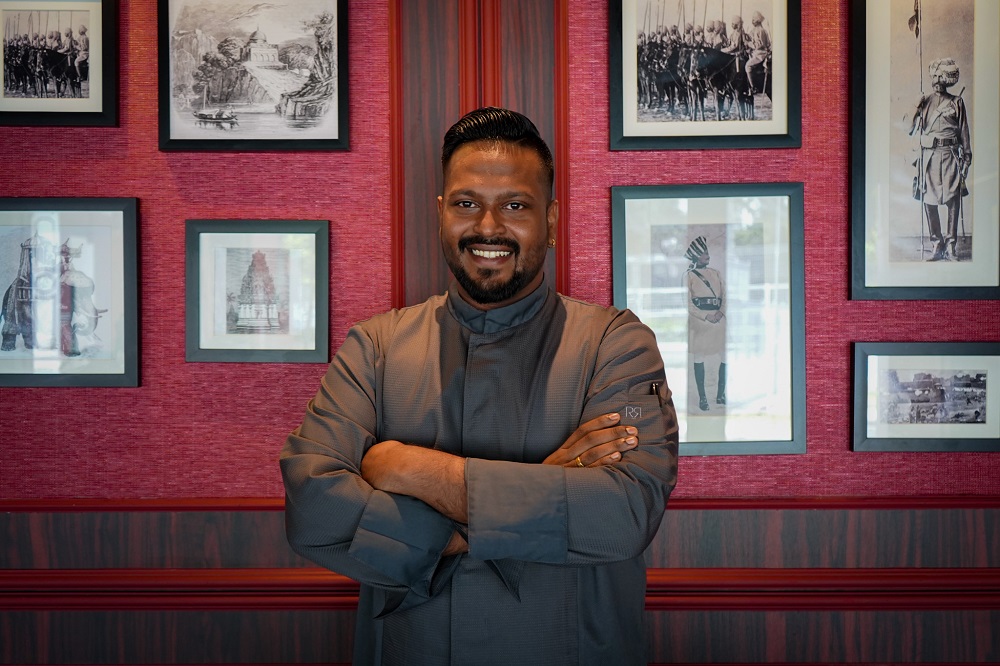Mod-Indian restaurant Firangi Superstar is in a league of its own with playful dishes, whimsical decor and an exuberant perspective of India.

Step into Firangi Superstar on Craig Road, and one can safely conclude that the restaurant is determined to rewrite the script (or in this case, recipe) for Indian cuisine.
The sensory, almost cinematic journey begins in its four distinct rooms, each with its own story told through thematic décor and furnishings – the posh Officer’s Club (complete with replica rifles on the wall), the Wes Anderson-esque Old Railway Room, the opulent Elephant Palace and the wild Jungle Lodge. From Bombay to Rajasthan, Chennai to Kashmir, diners are whisked away to what feels like a film set or old-world India, or both.
EXPECT THE UNEXPECTED
Any whispers of “colonial glorification” as some other critics have suggested are cast aside once the menu is presented. Here, head chef Thiru Gunasakaran works his magic as he puts a creative twist on wellknown Indian classics proudly described as “authentically inauthentic”. He explains, “Dishes are rooted in history and tradition, but executed in a refreshing and playful way.”

Gunasakaran, who was previously executive sous chef at Spago by Wolfgang Puck, had never cooked Indian food professionally even though he always thought about doing it. So when founders of The Dandy Collection and owners Michael Goodman and Rohit Roopchand presented the concept for the restaurant, he jumped at the opportunity. “The Indian food I am most familiar with is what I ate and continue to eat at home. I’m very much guided by these familiar flavours to create the dishes at Firangi Superstar,” he says. “At the same time, my background in French-Western cuisine has allowed me to explore different ways or apply different techniques to develop these dishes.”
So far he says the experience has been “interesting”. The 31-year-old explains that he had to look even more closely at the food he had grown up with and even those he had taken for granted. “Aloo Gobi, Dhal Makhani, Palak Paneer, Chole Masala, Chicken Tikka were dishes that I enjoyed so much growing up. From there, I experimented with pairings and techniques, and brainstormed for ways to introduce and layer flavours on the plate.”
Ingredients like kokum and jaggery syrup, equipment such as tandoor and special moulds for making idli, and techniques key to the cuisine are used. He puts all these seemingly disparate elements together – think octopus, rubbed with Indian spices, then roasted in the tandoor – to create dishes that are fresh and exciting.
.jpg)
The menu is playful and quirky consisting of small and big plates. Holi Cow is, quite literally, the tongue-in-cheek name of a bone marrow and beef dish; This Is Not Aloo Gobi is a creative take on a classic vegetarian dish; and Prata Waffle??? is as unconventional as its name.
If this is Gunasakaran’s debut, stay tuned for the sequel. “We’ll continue to push the envelope and put out dishes that defy any strict definition of what is or is not Indian,” he says.
THE OLD RAILWAY ROOM
The restaurant’s private dining room is decked out like a vintage train carriage. “It is an affectionate celebration of one of the things India is truly famous for: one of the largest railway networks in the world,” says Goodman.
Old-school ceiling fans, wall lamps and overhanging racks of vintage suitcases adorn the room. “Diners can forget the outside world for a bit and be transported to another universe,” he adds. But it’s the specially commissioned painting that draws the eye.
A highly personal artwork, it capturesscenessuchasthefort where Goodman and his wife were married, and a snippet of a scene from Wes Anderson’s The Darjeeling Limited.
.jpg)